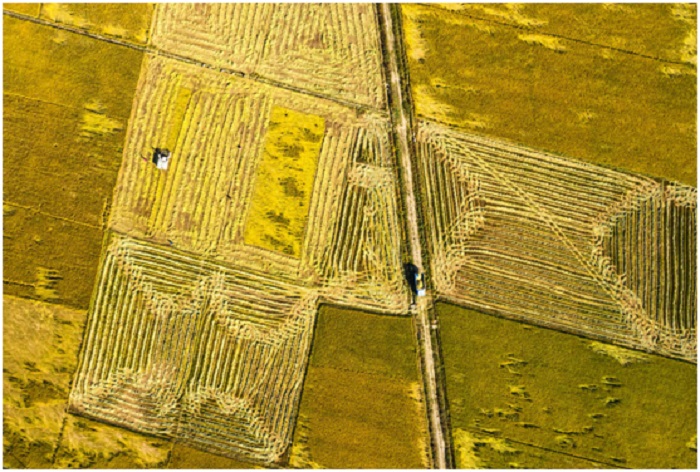



China is now busy reaping autumn grain crops, after seeing a bumper harvest of summer grain and early rice.
The country’s summer grain output increased by 0.9 percent from last year and its early rice up by 3.9 percent year-on-year, data from the National Bureau of Statistics (NBS) suggested.
The total output of summer grain and early rice rose by 2.25 billion kilograms over the previous year.
Autumn grain accounts for more than 70 percent of China’s total annual grain output and plays a crucial role in the country’s annual grain production.
In general, China is witnessing a sound grain production situation this year and has maintained a sound momentum of steady growth in terms of grain production, according to Pan Wenbo, head of the crop production department with the Ministry of Agriculture and Rural Affairs.
So far, nearly 80 percent of autumn grain has been harvested and the overall progress is basically the same as last year.
“Last year, I tried double-seed corn sowing technique under the guidance of the local government and saw a yield increase of 100 kilograms per unit,” said Zhao Shumei, owner of a family farm in Zhaogang township, Fengqiu county of central China’s Henan province.
Zhao is occasionally seen bustle around in the corn fields and write notes in a notebook. “I plan to continue using the technique this year, so I want to collect data during the major links of production and keep fine management of the fields,” the farmer told the People’s Daily.
Every link of grain production is important. To ensure a bumper harvest of autumn grain, provinces in China have sent agricultural experts and technicians to the fields, and encouraged them to provide timely online and offline consultation and instruction and introduce disaster relief measures and techniques for stabilizing and increasing production to the farmers.
At present, most areas in China are enjoying suitable soil moisture, as well as normal temperature and light conditions, which is good for the autumn crop yields and autumn harvest and plowing, noted Wang Ge, deputy head of the National Agro-Tech Extension and Service Center.
Floods mainly happened this year in the planting areas of early rice, which means that this specific crop has been most affected, Wang pointed out. However, thanks to expanding planting areas, stronger technical support, and timely disaster prevention and mitigation, rice is still expected to see a bumper harvest this year, Wang added.
For several days in late September, Guo Haisheng, a farmer in Yanxi village, Yutian township, Suichuan county, east China’s Jiangxi province, had operated a drone early in the morning to spray insecticide in a high-standard farmland of his.
High-standard farmlands make it easier for large-scale agricultural machinery to do its work, Guo said, adding that it only takes him about 300 yuan ($44.7) to apply machinery to reap and ship one mu (about 666.67 square meters) of rice.
Besides, the average yield per mu of high-standard farmlands is 40 to 50 kilograms higher than that in the past, according to Guo. This year, he obtained the management right of 2,800 mu of land in the town to plant double-season rice.
In recent years, China has promoted the construction of 80 million mu of high-standard farmland every year.
This year, the central government has allocated 86.7 billion yuan of subsidies for farmland construction, giving priority to the construction of high-standard farmland in functional zones for grain production and major agricultural product protection areas.
At present, over 70 percent of China’s crops are planted and cultivated by machines, which are currently working across the country to reap autumn grains.
While east China’s Anhui province has applied 3.3 million sets of agricultural machinery and tools for the autumn harvest this year, Laixi, east China’s Shandong province, is promoting corn threshing machines to cut cost and improve efficiency.
As the summer grain enters the market, China has successively launched its minimum price program and market-oriented sales of rice and early rice.
As of the end of August, a total of 49.26 million tonnes of wheat and 4.72 million tonnes of early rice had been purchased in major agricultural production areas.


The Executive and members of the.


The Acting Director, FCT Directorate of.


President Bola Ahmed Tinubu has been.



Barely a month after resignation of.


An Abuja based Legal Practitioner, Osuagwu.



Convener of Equitable Remedy, Mrs. Magaret.


Contractors handling the contract for city.


Nigerian government may have concluded plans.


The Diplomatic Correspondents Association of Nigeria.


A rights group, “Follow Me Talk.
Leave a Comment